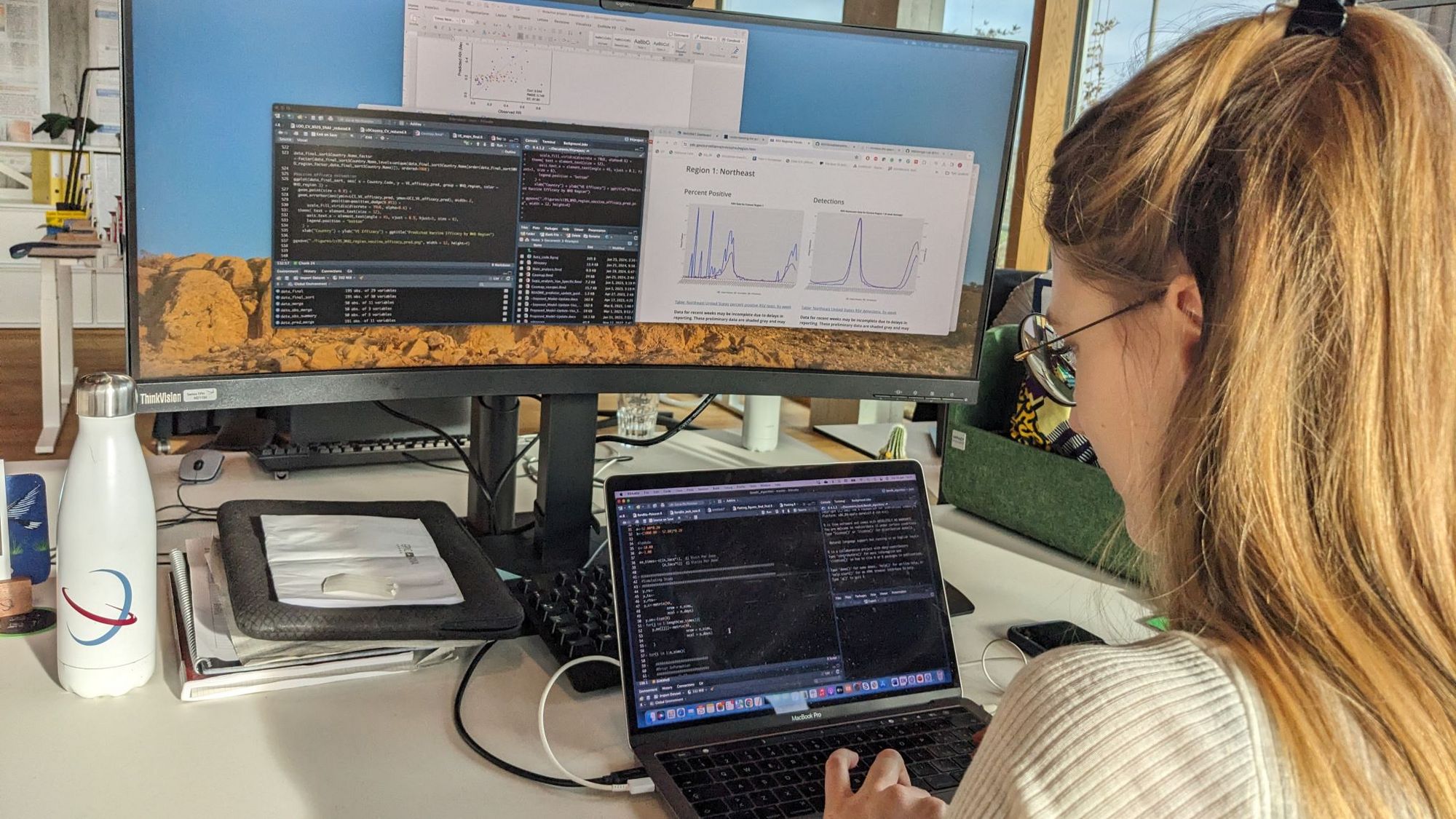Unit | Disease Modelling
The Disease Modelling unit develops and uses approaches in computational sciences, statistics and mathematical modelling to understand and address contemporary issues in infectious diseases and global health. We work in the areas of malaria and neglected tropical diseases.
We are an interdisciplinary group of researchers that apply mathematical models to understand disease and to inform public health decision-making. We design data-, biology- and epidemiologically-informed mathematical models covering aspects of disease dynamics, population transmission, vector life-cycles, health systems access and intervention effects.
Understanding Disease Dynamics and Informing Decision Making
We use these models to understand disease dynamics and transmission, and to estimate impacts of health interventions at individual or population level in the context of real-world health systems. We contribute epidemiological insights and evidence to inform public health decision making. We aim to increase the impact of interventions, to eliminate, prevent and treat infectious diseases. We work closely with other research institutions in Switzerland and abroad, as well as global health donors and public health policy stakeholders

Nakul Chitnis
Prof. Dr.
Head of Unit
+41612848242
,
*
nakul.chitnis@swisstph.ch
Key Projects
Core Malaria Software for Modellers Worldwide
Core to our modelling work is the development and use of an individual-based model of malaria transmission dynamics known as OpenMalaria. This model is an open-source tool for simulating the dynamics of malaria transmission and epidemiology, and the impact of interventions on health and economic outcomes. The model can simulate malaria in village or district size human populations, and has been used to address questions on disease dynamics and the use of interventions. Developed and maintained by the Disease Modelling Unit of Swiss TPH, our OpenMalaria model is used by a wide range of modellers worldwide. A new collaboration with the Bill & Melinda Gates Foundation supports the improvement and maintenance of OpenMalaria as well as the development of new mathematical malaria models. This project will provide model-based evidence for the Foundation and key partners towards improved investment and decision-making for better malaria control and elimination. Read more
Evaluating New Vector Control Tools
There has been substantial progress in reducing malaria transmission in the Greater Mekong Subregion. However, progress has stalled with reports of increase in the number of cases, multidrug-resistant malaria, and pyrethroid-resistant mosquitoes. The risk of infection is greatest among mobile and migrant populations. Many of the dominant malaria vectors in this subregion feed and rest outdoors, yet there is limited available protection against mosquito biting outdoors for at-risk populations. To address these pressing challenges, the University of California, San Francisco, Malaria Elimination Initiative in partnership with the University of Notre Dame, IVCC, Swiss TPH, and a consortium of project partners propose to evaluate new vector control tools that aim to reduce human exposure to mosquito bites outdoors. Read more
Unit Members
Selected Projects
All ProjectsLatest Publications
All PublicationsBanholzer N et al. The relative contribution of close-proximity contacts, shared classroom exposure and indoor air quality to respiratory virus transmission in schools. Nat Commun. 2025(in press). DOI: 10.1038/s41467-025-66719-3
Malinga J et al. Performance characteristics and potential public health impact of improved pre-erythrocytic malaria vaccines targeting childhood burden. PLOS Glob Public Health. 2025;5(8):e0004549. DOI: 10.1371/journal.pgph.0004549
Martinez de Salazar P et al. Malaria spillover in indigenous Guyanese communities following a crackdown on illegal gold mining in Brazil. Lancet Reg Health Am. 2025;42:100969. DOI: 10.1016/j.lana.2024.100969
Masserey T, Braunack-Mayer L, Miller R.S, Möhrle J.J, Penny M.A. A roadmap for understanding sulfadoxine-pyrimethamine in malaria chemoprevention. Parasitology. 2025;152(2):133-142. DOI: 10.1017/s0031182025000071
Masserey T. Determinants of resistance establishment and spread to inform interventions against malaria. Basel: Univ. Basel, 2025. Doctoral Thesis, University of Basel, Faculty of Science DOI: ?
Moriarty K, Champetier A, Galli F, Dürr S, Chitnis N. Identifying effective surveillance measures for swine pathogens using contact networks and mathematical modeling. PLoS One. 2025;20(8):e0329714. DOI: 10.1371/journal.pone.0329714

 Alonso Bussalleu
Alonso Bussalleu
 Aurélien Cavelan
Aurélien Cavelan
 Nakul Chitnis
Nakul Chitnis
 Inez Derkx
Inez Derkx
 Daniella Figueroa-Downing
Daniella Figueroa-Downing
 Daria Hofer
Daria Hofer
 Anne Jacobs
Anne Jacobs
 Alexis Martin
Alexis Martin
 Pablo Martinez de Salazar
Pablo Martinez de Salazar
 Thiery Masserey
Thiery Masserey
 James Munday
James Munday
 Louis Perriens
Louis Perriens
 Maximilian Richter
Maximilian Richter
 Fabian Schär
Fabian Schär
 Taru Singhal
Taru Singhal